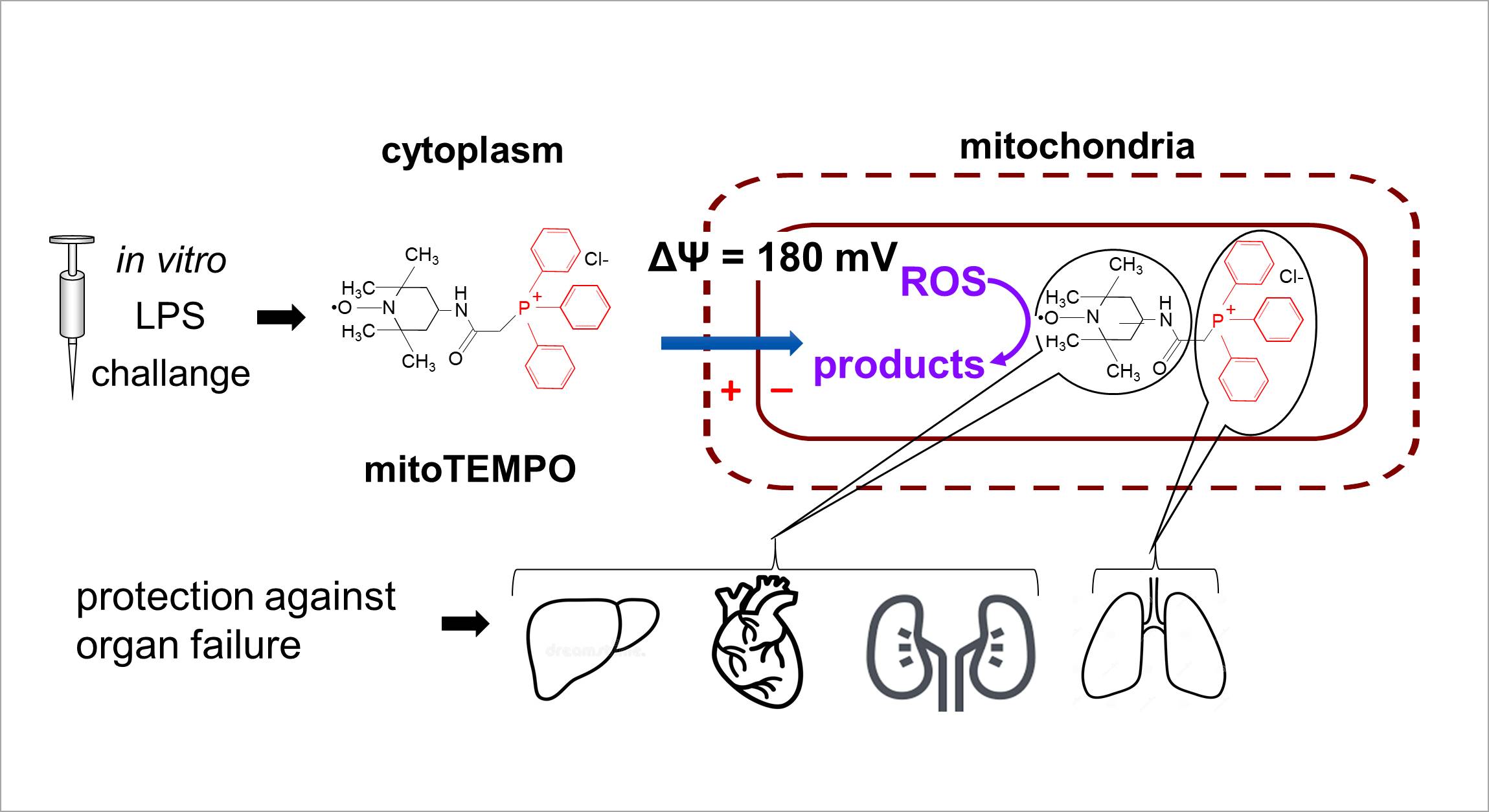Reactive oxygen species (ROS)-mediated lung injury in acute respiratory distress syndrome (ARDS) and Corona virus disease 2019 (COVID-19)
Reactive oxygen species (ROS) and reactive nitrogen species (RNS) are messenger molecules inside cells, yet their accumulation upon cellular stress causes them to damage cellular structures. Therefore, we want to deepen our understanding of their pathological generation and how to counteract it. In our studies, we investigate the effect of lipopolysaccharide (LPS) challenge in vivo to stimulate ROS generation and mitigated their damaging properties with mitoTEMPO. This molecule consists of two main parts, the antioxidative part (TEMPO) as well as a carrier (triphenylphosphonium (TPP+)) to transport it through the mitochondrial membrane. Interestingly, our findings showed that in lung mitochondria it is not TEMPO showing protective effects but the carrier TPP+ itself. Currently we are trying to understand the mechanisms underlying this difference.
For detailed information see, for example, “Systemic Effects of mitoTEMPO upon Lipopolysaccharide Challenge Are Due to Its Antioxidant Part, While Local Effects in the Lung Are Due to Triphenylphosphonium”, Weidinger et al., Antioxidants (Basel). 2022 Feb 6;11(2):323. doi: 10.3390/antiox11020323; and “Effect of mitoTEMPO on Redox Reactions in Different Body Compartments upon Endotoxemia in Rats”, Weidinger et al., Biomolecules. 2023 May 5;13(5):794. doi: 10.3390/biom13050794.
